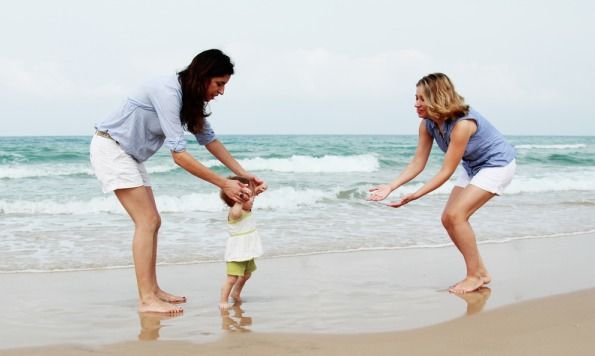
Women may be more "hetero-flexible," or be primarily attracted to men with some same sex attraction, because same-sex behavior allowed women to raise their children with other women, a new study has proposed.
The hypothesis, published this April in the journal Evolutionary Psychology, suggests that more fluid female sexuality may have evolved because it benefited women's offspring. Some women who were raped or fathered children with absentee or deceased dads formed sexual relationships with other women, which may have made it easier to raise children together, according to the theory.
"Being born with the ability to [be attracted to men and women] may have been beneficial to ancestral women," said study co-author Barry X. Kuhle, a psychologist at the University of Scranton in Pennsylvania. [5 Myths About Polyamory Debunked]
Not everyone agrees with Kuhle's hypothesis, pointing to the lack of evidence to support it and suggesting perhaps women's more fluid sexual boundaries may just be a byproduct of some other evolutionary change. There may be no evolutionary reason for the hetero-flexibility, they say.
More fluid
Several studies have shown that women are much more likely than men to report attraction to and physical contact with same-sex partners. Women also show similar genital arousal when viewing images of both sexes in erotic situations.
But exactly why has been a puzzle. Researchers have proposed that women's sexual fluidity enabled women to bond with sister wives in polygamous marriages. Still others have argued that it's a byproduct of the fact that women have weaker sex drives that are therefore easier to channel to different objects of attraction, Kuhle wrote in the paper.
Sign up for the Live Science daily newsletter now
Get the world’s most fascinating discoveries delivered straight to your inbox.
To better understand women's sexuality, Kuhle looked to other animals for clues. The Laysan albatross's ability to form same-sex bonds may help them alloparent, or raise young that are not their own. Other studies suggest bonobos, which share more than 98 percent of their DNA with humans, often help rear other apes' offspring and cement social bonds by having sex with other troop members — both male and female. (In general, bonobos have a lot of sex).
That made Kuhle wonder whether sexual fluidity in women has its origins in raising children.
He hypothesizes that being sexually attracted to women and men could come in handy in many circumstances: instances in which women have been raped, or when a father abandons his partner or dies. Women in those situations would need an extra pair of hands to help raise their children, and having sex with other women may have made it easier to find a same-sex child-rearing partner who wasn't related to them. (Kuhle's theory doesn't try to explain women who identify as lesbians.)
Kuhle lays out several ways to that researchers could test his hypothesis if they wanted to.Women who have been physically or sexually abused, abandoned by their husbands or widowed should be more likely to go on to same-sex relationships, he said. He also proposes that women who have lower "mate value" — that is, are less attractive mates for males — would be likelier to be bisexual.
"It's an intriguing idea, but there is actually very little evolutionary evidence for it," said Lisa Diamond, a psychologist at the University of Utah and the author of "Sexual Fluidity: Understanding Women's Love and Desire" (Harvard University Press, 2009).
If Kuhle's theory was accurate, women who have heterosexual and same-sex attraction in nonindustrial societies would have more children, which hasn't been shown, Diamond told LiveScience.
Instead, sexual fluidity in women may simply be a trait that hasn't been weeded out.
"Gay people were having babies throughout human history," Diamond told LiveScience. "So as long as there's no reason for evolution to get rid of a capacity for fluidity, then it probably survived as a fun little byproduct. It's like the appendix — it may not serve a function, it may just be there."
Follow Tia Ghose on Twitterand Google+. Follow LiveScience @livescience, Facebook & Google+. Original article on LiveScience.com.

Tia is the managing editor and was previously a senior writer for Live Science. Her work has appeared in Scientific American, Wired.com and other outlets. She holds a master's degree in bioengineering from the University of Washington, a graduate certificate in science writing from UC Santa Cruz and a bachelor's degree in mechanical engineering from the University of Texas at Austin. Tia was part of a team at the Milwaukee Journal Sentinel that published the Empty Cradles series on preterm births, which won multiple awards, including the 2012 Casey Medal for Meritorious Journalism.











